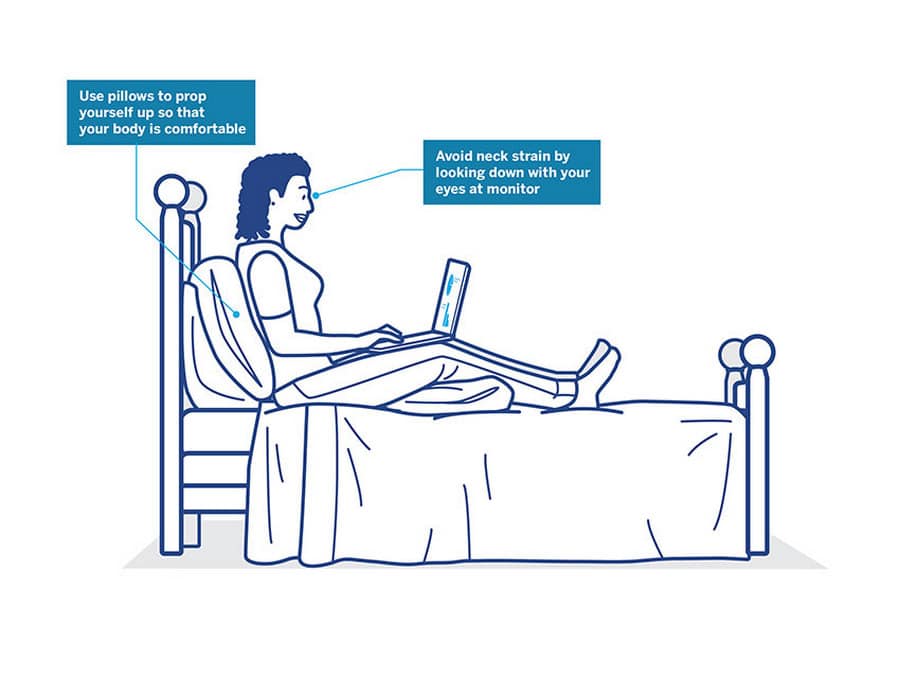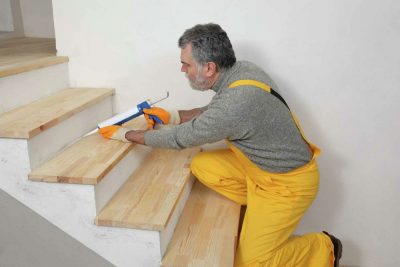If you ask any health professional, they’ll tell you that working from bed is a bad idea. However, with an influx of remote workers now spending their days at home, many people are struggling to resist the temptation of snuggling up and working beneath the duvet.
When no one else is around and you’re feeling particularly comfortable, the notion of leaving a warm bed is not very appealing. Even if you have a home office designed especially for the purpose.
Nevertheless, working in bed can present numerous health challenges that may not affect you now, but will inevitably be difficult to deal with later on down the line.
Interestingly enough, it’s not just remote workers that find themselves in this dilemma. Pregnant women or people with chronic illnesses may also require the comfort of a bed-based workday. But this type of bed rest will usually come alongside a doctor’s instructions.
Whether you have a valid reason for working from bed or not, the reality is that the decision comes with both pros and cons. If you feel conflicted about working in bed, know that there are healthy ways to go about it if you really have no other options. Or if you just feel like a day away from your desk.
So how do we make the pros outweigh the cons—and what are some ways to moderate the potential damages? Let’s find out.

What Are The Pros And Cons Of Working In Bed?
While the list of cons associated with working in bed tends to be longer than the pros, there are some real benefits to spending all day on your mattress.
● Comfortability – working from bed is more physically comfortable than working from a desk.
● Convenience – sleeping and working in the same environment eliminates the need for unnecessary movements, making your day more convenient.
● Productivity – some studies suggest that the casual comfortability of working in bed can help unlock productivity and creative thinking.
On the other hand, health specialists and psychologists alike are quite adamant that working in bed produces more negative side effects than positive ones. Such as:
● Back problems – working from bed often means using soft cushions for support, which can contribute to poor posture and back problems.
● Sleep dysfunction – according to science, beds should be a place we associate with sleep. Working in bed disrupts that association and can lead to insomnia.
● Low energy – it can be hard to stay energized when you stay in bed all day. Even when you are working, a day in bed can contribute to low energy.
Based on these two lists, it’s clear to see that working in bed comes with both upsides and downsides. At the end of the day, you have to make a decision that is most sensible for your lifestyle and not anyone else’s.
If the cons aren’t enough to put you off wanting to work in bed, here’s a list of things you can do to minimize the negative impact they might have.
How Can I Work From Bed Without Causing Damage?
Despite the odds stacked against those who choose to work from bed, there are some effective, practical measures that you can take to prevent damage.
Most of them involve setting up your bed space in a way that works with the body rather than against it, and practicing habits that support a healthy lifestyle.

1. Invest a firm, high-quality mattress
A soft, squishy mattress is only going to cause back pain. If you want to work from bed regularly, now is the time to invest in a high-quality mattress that allows you to sit down without sinking. This will prevent posture issues from developing while giving you a better night of rest.
2. Change your clothes
It might seem like a simple ploy, but this decision can make a big difference to how comfortable you feel at the end of the day. Working in pajamas can make you feel sluggish and unprofessional. Rather, opt for getting up and changing into fresh clothes before getting stuck into work. The average adult tends to shed 300,000 dead skin cells each night. So, spending the day wearing the same linens that you slept in may contribute to bad hygiene or attract bed bugs. No thanks!
3. Sit up straight
How you choose to sit throughout the day will greatly influence your sense of overall comfort and well-being. Ideally, your spine, neck, and head should all be in a straight line, assisting in support and allowing you to maintain a healthy posture.

4. Use pillows for support
A bit of support will do your back a world of good. Firm, body-hugging pillows positioned directly behind your back will help to ease neck strain and allow you to lean on something solid. A foam wedge works particularly well, but the firmest pillows you can find will also do.
5. Take regular breaks
This one is perhaps the most important tip of all. If you’re going to be sitting in bed for the majority of your day, getting up and taking regular, timed breaks will help minimize pressure build-ups and ease any strain your body may be experiencing. The recommended break schedule is 5-15 minutes every hour, but you can adjust this according to your personal routine.
6. Get a sturdy bed desk
Investing in a bed desk is the ultimate in domestic design. It will mean your eye level is raised and your laptop is less likely to overheat. Plus, it provides you with a neat, sturdy platform to set down coffee mugs or cups of tea. It’s small adjustments like this that will help your body acclimatize to sitting in bed all day.

Sometimes Bed Is Best
If you can manage to follow at least some of the above techniques, there is no reason why the occasional work-from-bed day should cause you any harm. The trick is to keep moving, and listen to your body when it tells you something needs to change.
Whatever your reasons are for or against working in bed, clearly there are methods and strategies that you can put into place for healthy and sustainable bed-based workdays.








